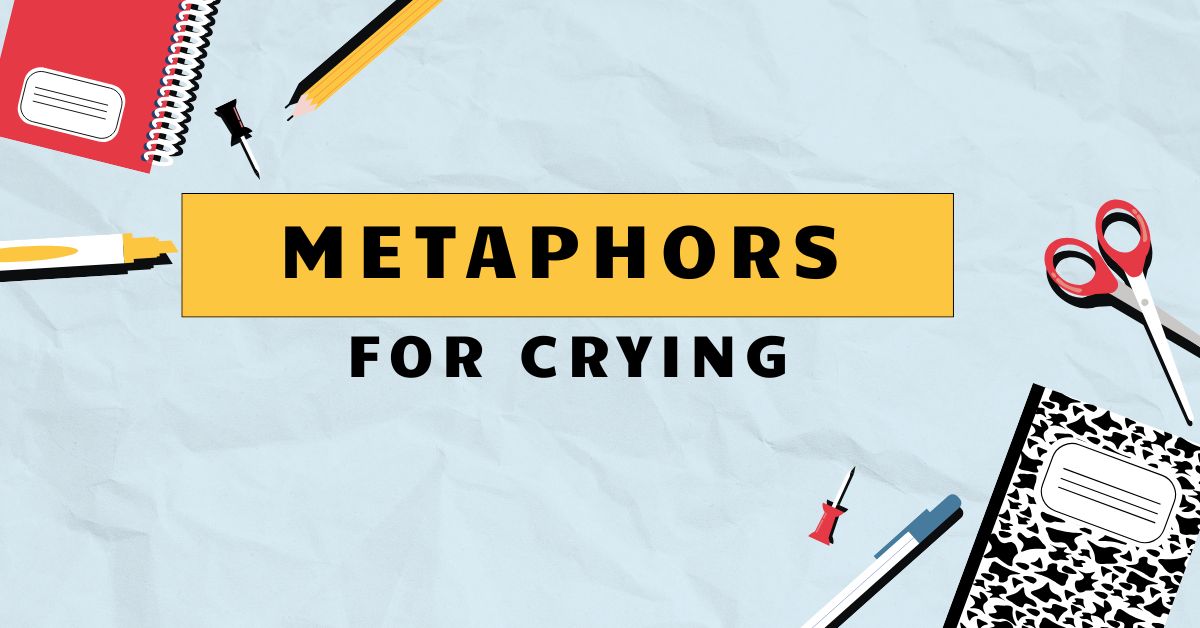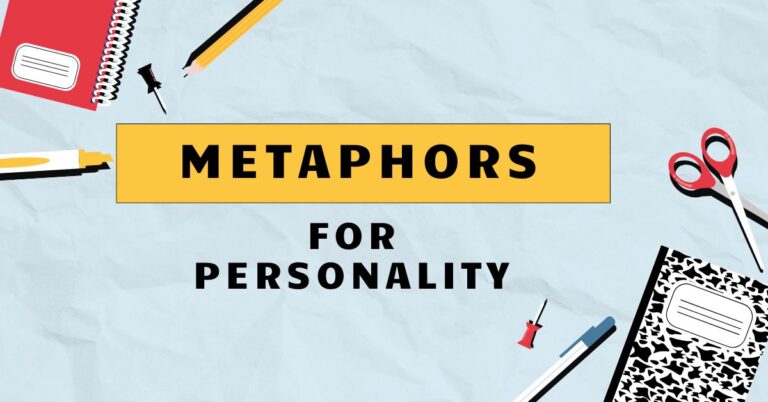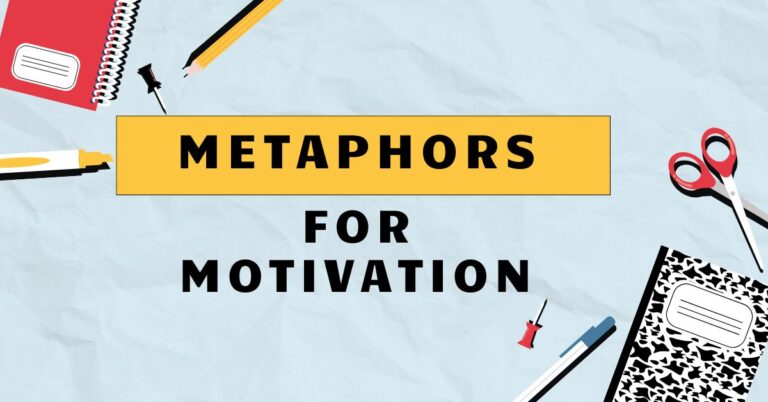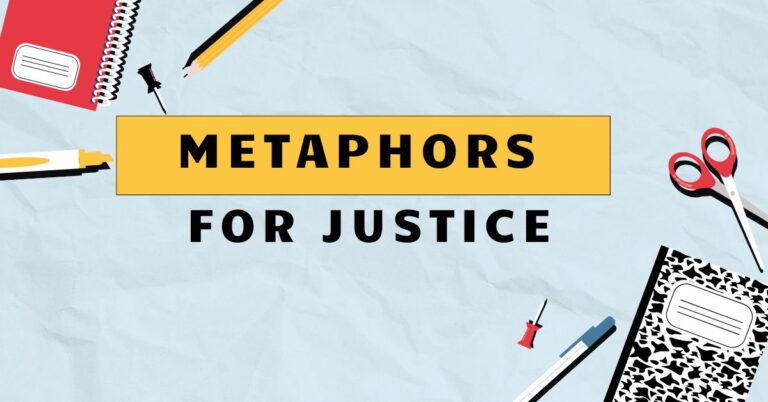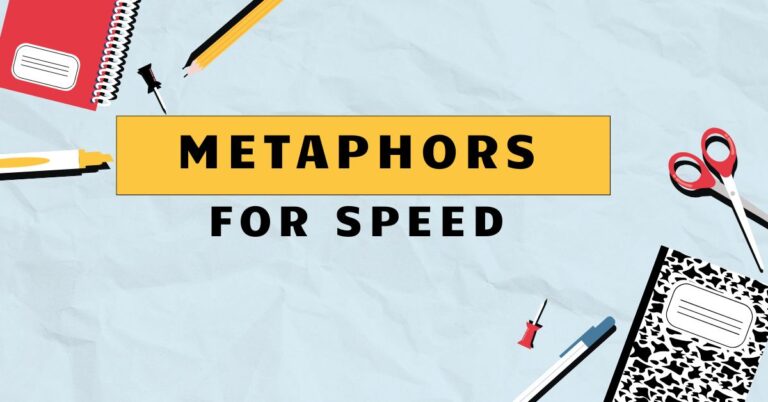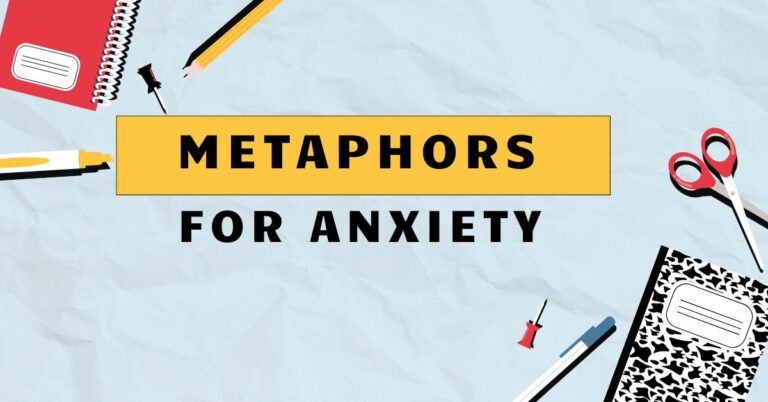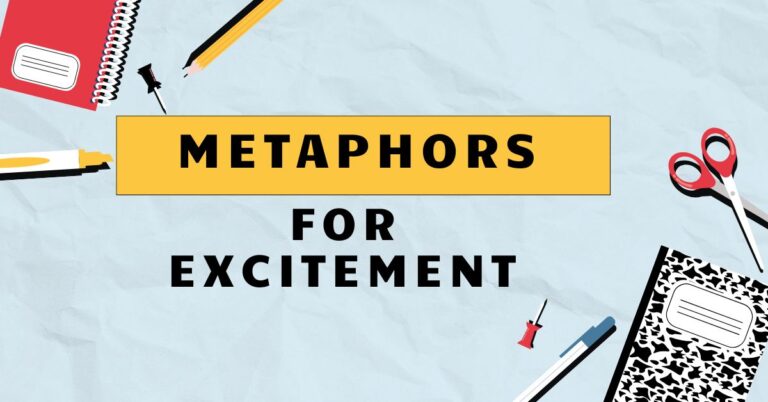47 Metaphors for Crying: A Comprehensive Guide
Understanding metaphors for crying is crucial for grasping the nuances of the English language and enhancing both comprehension and expression. Crying, a fundamental human emotion, is often described using vivid metaphorical language to convey the intensity and nature of the experience.
This guide is designed to provide a thorough exploration of metaphors for crying, equipping learners with the knowledge to recognize, interpret, and effectively use these figures of speech. This article is suitable for English language learners, writers, and anyone interested in exploring the richness of figurative language.
Table of Contents
- Introduction
- Definition of Metaphor for Crying
- Structural Breakdown
- Types of Metaphors for Crying
- Examples of Metaphors for Crying
- Usage Rules
- Common Mistakes
- Practice Exercises
- Advanced Topics
- FAQ
- Conclusion
Definition of Metaphor for Crying
A metaphor for crying is a figure of speech that describes the act of crying by comparing it to something else, without using “like” or “as.” Metaphors are used to create vivid imagery and convey the intensity or nature of the emotional experience associated with crying. They operate by transferring qualities from one thing (the source) to another (the target), allowing for a deeper and more evocative understanding.
In essence, a metaphor suggests a resemblance between crying and something seemingly unrelated. This comparison highlights specific aspects of crying, such as the volume of tears, the emotional release, or the physical sensation.
The function of these metaphors is to enhance communication by making the experience of crying more relatable and understandable to others. They enrich language and allow for more creative and impactful expression.
The contexts in which metaphors for crying are used vary widely. They appear in literature, poetry, song lyrics, everyday conversation, and formal writing.
Their presence depends on the desired effect – whether it’s to emphasize the depth of sorrow, to evoke empathy, or simply to add a touch of artistry to the language. The choice of metaphor often reflects the speaker’s or writer’s perspective and the specific emotional tone they wish to convey.
Structural Breakdown
Metaphors, in general, consist of two primary components: thetenorand thevehicle. The tenor is the subject being described (in this case, crying), and the vehicle is the object or concept to which it is being compared.
The connection between the tenor and vehicle is what creates the metaphorical meaning.
For metaphors describing crying, the tenor remains constant: the act of crying itself. However, the vehicle can vary greatly, drawing from a wide range of concepts such as water, weather, emotional discharge, physical sensations, and even animalistic behaviors.
The effectiveness of a metaphor depends on how well the vehicle captures and conveys the intended aspect of the crying.
Consider the metaphor, “She wept a river of tears.” Here, the tenor is “crying” or “wept,” and the vehicle is “a river of tears.” The structural relationship implies that the volume and flow of her tears were comparable to a river, emphasizing the intensity and abundance of her sorrow. The success of this metaphor lies in the common understanding of a river as a large, flowing body of water, which effectively translates to the image of profuse crying.
The underlying pattern in these metaphors involves the transfer of attributes. For example, in “Tears streamed down her face,” the verb “streamed” borrows the attribute of flowing water and applies it to the movement of tears.
This pattern allows for a concise yet powerful description of the crying experience. Understanding this structural breakdown helps in both interpreting and creating effective metaphors for crying.
Types of Metaphors for Crying
Metaphors for crying can be categorized based on the type of imagery they evoke. These categories help to understand the different facets of crying that metaphors can highlight.
Water-Related Metaphors
Water-related metaphors are among the most common. They draw parallels between tears and various forms of water, such as rivers, oceans, streams, and rain.
These metaphors often emphasize the volume, flow, or purity (or lack thereof) of tears. “A flood of tears” and “an ocean of grief” are typical examples.
Weather-Related Metaphors
Weather-related metaphors extend the water theme by associating crying with broader weather phenomena. Crying might be likened to a storm, a downpour, or a drizzle.
These metaphors often convey the intensity and suddenness of crying episodes, as well as the emotional climate surrounding them. An example is “Her sorrow rained down on us.”
Emotional Discharge Metaphors
These metaphors focus on the idea of crying as a release of pent-up emotions. They may describe crying as a valve being opened, a dam breaking, or a weight being lifted.
The emphasis here is on the cathartic aspect of crying and the sense of relief that can follow. The phrase “She unleashed a torrent of grief” is a good example.
Physical Sensation Metaphors
Physical sensation metaphors describe the physical effects of crying, such as the burning sensation in the eyes, the tightness in the chest, or the feeling of being drained. These metaphors often highlight the physical toll that crying can take on the body.
Examples include “Her eyes burned with unshed tears” and “A wave of sadness washed over her.”
Animalistic Metaphors
Animalistic metaphors compare crying to the sounds or behaviors of animals, such as wailing like a wolf or sobbing like a child. These metaphors can convey a sense of vulnerability, primal emotion, or uncontrolled grief.
“He howled in despair” is a classic example.
Examples of Metaphors for Crying
To further illustrate the different types of metaphors for crying, here are several examples organized by category.
Water-Related Examples
The following table provides examples of water-related metaphors for crying, showcasing how tears are compared to various forms of water to emphasize their volume, flow, or emotional impact.
| Metaphor | Explanation |
|---|---|
| She cried a river. | Implies a large volume of tears. |
| Tears streamed down her face. | Describes the continuous flow of tears. |
| A flood of tears overwhelmed her. | Suggests an uncontrollable outpouring of grief. |
| His eyes were fountains of sorrow. | Emphasizes a constant source of tears. |
| She drowned in a sea of grief. | Conveys being overwhelmed by sadness. |
| Her tears were a waterfall. | Highlights the intensity and volume of the tears. |
| A pool of tears gathered in her lap. | Describes the physical accumulation of tears. |
| The grief flowed like a steady stream. | Implies a constant, unwavering sadness. |
| Her heart wept an ocean of sorrow. | Highlights the depth and vastness of sadness. |
| Tears cascaded down her cheeks. | Describes a rapid and abundant flow of tears. |
| He was swimming in his own tears. | Conveys being completely immersed in sorrow. |
| She released a deluge of tears. | Implies a sudden and overwhelming burst of crying. |
| His tears were a mere trickle. | Suggests a small and restrained amount of crying. |
| Her eyes were brimming with tears. | Describes the imminence of crying. |
| She was awash in tears. | Conveys being saturated with sorrow. |
| His tears formed a puddle on the floor. | Highlights the physical manifestation of grief. |
| Her sorrow was a deep well of tears. | Implies a seemingly endless source of sadness. |
| Tears gushed from her eyes. | Describes a sudden and forceful outpouring of tears. |
| She was engulfed by a tidal wave of tears. | Conveys being completely overtaken by grief. |
| His tears were a gentle rain. | Suggests a soft and comforting form of crying. |
| Her tears carved a path down her face. | Highlights the physical impact of prolonged crying. |
| The tears flowed freely like a spring. | Implies a natural and uninhibited release of emotion. |
| He was drowning in a reservoir of sadness. | Conveys being overwhelmed by a large accumulation of grief. |
| Her tears were a downpour of despair. | Highlights the intensity and overwhelming nature of sadness. |
| She navigated through a swamp of tears. | Implies a difficult and arduous journey through grief. |
Weather-Related Examples
This table illustrates weather-related metaphors, where crying is compared to different weather conditions to express the intensity, duration, or emotional climate of the experience.
| Metaphor | Explanation |
|---|---|
| Her sorrow rained down on us. | Implies that her sadness affected others. |
| A storm of tears erupted. | Suggests a sudden and intense outburst of crying. |
| Her grief was a dark cloud over the day. | Conveys a pervasive sense of sadness. |
| Tears fell like a gentle drizzle. | Describes a soft and continuous crying. |
| She weathered the storm of grief. | Implies enduring a difficult period of sadness. |
| A hurricane of tears swept through her. | Highlights the violent and overwhelming nature of the crying. |
| Her eyes were clouded with sorrow. | Conveys a sense of obscured vision due to sadness. |
| The tears poured like a monsoon. | Describes a heavy and prolonged period of crying. |
| She faced a blizzard of emotions. | Implies being overwhelmed by a multitude of intense feelings. |
| A fog of sadness enveloped her. | Conveys a sense of being surrounded and obscured by grief. |
| Her tears were shards of ice. | Suggests a cold and painful form of crying. |
| She was caught in a whirlwind of grief. | Implies being uncontrollably swept up in sorrow. |
| A thunderclap of sobs shook her body. | Describes a sudden and powerful burst of crying. |
| Her grief cast a long shadow. | Conveys a lasting and pervasive sense of sadness. |
| Tears pattered like raindrops on the window. | Describes a gentle and rhythmic crying. |
| She was frozen in her grief. | Implies being unable to move or act due to sadness. |
| Her eyes were like a sky weeping rain. | Highlights the natural and inevitable expression of sadness. |
| A heatwave of emotion overwhelmed her. | Conveys a sudden and intense surge of feeling. |
| Her grief was an endless winter. | Implies a prolonged and desolate period of sadness. |
| Tears evaporated like morning dew. | Describes a brief and fleeting moment of crying. |
| She found sunshine after the rain of tears. | Implies finding happiness after a period of sadness. |
| Her heart was a barometer of sorrow. | Conveys a constant and measurable level of sadness. |
| A deluge of despair flooded her soul. | Highlights the overwhelming and encompassing nature of sadness. |
| Her tears were a cold front of emotion. | Suggests a sudden and chilling wave of sadness. |
| She emerged from the storm of grief stronger. | Implies resilience and growth after enduring sadness. |
Emotional Discharge Examples
The subsequent table presents emotional discharge metaphors, focusing on how crying is portrayed as a release of pent-up feelings, providing relief or catharsis.
| Metaphor | Explanation |
|---|---|
| She unleashed a torrent of grief. | Implies a sudden and powerful release of sadness. |
| He opened the floodgates of his emotions. | Suggests allowing a large amount of pent-up feelings to be expressed. |
| The dam of her emotions broke. | Conveys an uncontrollable release of suppressed feelings. |
| She vented her sorrow through tears. | Describes crying as a way to release negative emotions. |
| He purged his grief with tears. | Implies cleansing oneself of sorrow through crying. |
| Her sobs were an explosion of pent-up pain. | Highlights the sudden and forceful release of suppressed emotions. |
| She released the valve on her emotions. | Conveys a controlled but necessary release of pent-up feelings. |
| His tears were a cathartic release. | Describes crying as a therapeutic way to process emotions. |
| She emptied her heart with tears. | Implies relieving oneself of emotional burden through crying. |
| He drained his sorrow through weeping. | Conveys a gradual but thorough release of sadness. |
| Her tears were a safety valve. | Suggests that crying prevents emotional overload. |
| She let go of her grief through sobs. | Implies releasing emotional attachment to sadness. |
| His tears were a release from the pressure. | Conveys relief from emotional strain through crying. |
| She unloaded her burden of sorrow. | Implies relieving oneself of a heavy emotional weight. |
| His tears were an emotional detox. | Describes crying as a way to cleanse oneself of negative feelings. |
| She channeled her grief into tears. | Implies directing emotional energy into crying. |
| His tears were a letting go of pain. | Conveys the act of releasing emotional suffering. |
| She discharged her sadness through weeping. | Describes crying as a way to expel negative emotions. |
| His tears were a way to unburden his soul. | Implies relieving oneself of spiritual or emotional weight. |
| She exhaled her grief through sobs. | Conveys a release of sadness similar to breathing out. |
| Her tears were a means of emotional escape. | Suggests that crying provides temporary relief from sadness. |
| He poured out his heart in tears. | Implies expressing deep and intimate feelings through crying. |
| She unraveled her sorrow through weeping. | Conveys a gradual and intricate release of sadness. |
| His tears were a cleansing rain for his soul. | Highlights the purifying and restorative nature of crying. |
| She shed her grief like old skin. | Implies a transformative and liberating release of sadness. |
Physical Sensation Examples
The following table provides examples of metaphors that describe the physical sensations associated with crying, such as burning eyes, a tight chest, or a feeling of being drained.
| Metaphor | Explanation |
|---|---|
| Her eyes burned with unshed tears. | Describes the stinging sensation of suppressed crying. |
| A wave of sadness washed over her. | Suggests an overwhelming physical sensation of grief. |
| Her throat tightened with emotion. | Conveys the physical constriction caused by suppressed crying. |
| A heavy weight settled on her chest. | Implies the physical burden of sadness. |
| Her body ached with sorrow. | Describes the physical pain caused by grief. |
| A knot formed in her stomach. | Conveys the physical anxiety associated with crying. |
| Her head throbbed with grief. | Describes the physical pain of intense sadness. |
| She felt hollow inside. | Implies a physical emptiness caused by crying. |
| Her limbs felt heavy with sorrow. | Conveys the physical lethargy associated with grief. |
| A chill ran down her spine. | Suggests a physical shock caused by sadness. |
| Her heart felt like it was breaking. | Describes the intense emotional and physical pain of grief. |
| Her face was flushed with tears. | Conveys the physical redness and heat caused by crying. |
| Her breath hitched with sobs. | Describes the physical interruption of breathing during crying. |
| She felt drained of all energy. | Implies the physical exhaustion caused by crying. |
| Her muscles tensed with grief. | Conveys the physical tension caused by sadness. |
| Her skin crawled with sadness. | Suggests a physical discomfort associated with grief. |
| She felt numb with sorrow. | Implies a physical detachment from feeling due to sadness. |
| Her voice cracked with emotion. | Describes the physical change in voice during crying. |
| She felt a lump in her throat. | Conveys the physical sensation of suppressed crying. |
| Her tears stung her eyes. | Describes the physical irritation caused by crying. |
| She felt as though her heart had been ripped out. | Highlights the intense emotional and physical pain of grief. |
| Her tears left a burning trail on her skin. | Conveys the physical irritation and discomfort of prolonged crying. |
| She was physically consumed by her grief. | Implies that her sadness had taken over her body. |
| Her tears felt like acid on her cheeks. | Suggests a corrosive and painful effect of crying. |
| She felt a deep ache in her soul. | Conveys a profound and pervasive sense of sadness. |
Animalistic Metaphors Examples
This table provides examples of animalistic metaphors for crying, where crying is compared to the sounds or behaviors of animals to convey vulnerability or uncontrolled grief.
| Metaphor | Explanation |
|---|---|
| He howled in despair. | Implies a loud and uncontrolled expression of grief. |
| She sobbed like a wounded animal. | Suggests a primal and vulnerable expression of sadness. |
| He whimpered like a lost puppy. | Conveys a sense of helplessness and sadness. |
| She cried like a banshee. | Describes a loud and piercing wail of grief. |
| He roared with grief. | Implies a powerful and unrestrained expression of sadness. |
| Her sobs were like the cries of a bird. | Suggests a delicate and plaintive expression of sadness. |
| He wailed like a wolf. | Conveys a mournful and prolonged expression of grief. |
| She bleated with sorrow. | Implies a weak and pitiful expression of sadness. |
| He bellowed with grief. | Describes a loud and resonant expression of sadness. |
| Her tears were like the mewling of a kitten. | Suggests a soft and vulnerable expression of sadness. |
| He screeched with despair. | Conveys a sharp and piercing expression of grief. |
| She sniveled like a child. | Implies a sniffling and subdued expression of sadness. |
| He growled with grief. | Describes a low and guttural expression of sadness. |
| Her sobs were like the chirping of crickets. | Suggests a subtle and persistent expression of sadness. |
| He brayed with sorrow. | Conveys a harsh and grating expression of grief. |
| She cooed with sadness. | Implies a soft and gentle expression of sorrow. |
| He barked with grief. | Describes a short and abrupt expression of sadness. |
| Her tears were like the hissing of a snake. | Suggests a subtle and insidious expression of sadness. |
| He hooted with despair. | Conveys a mournful and prolonged expression of grief. |
| She clucked with sadness. | Implies a soft and maternal expression of sorrow. |
| He bayed with grief. | Describes a deep and resonant expression of sadness. |
| Her sobs were like the croaking of a frog. | Suggests a guttural and persistent expression of sorrow. |
| He trumpeted with sorrow. | Conveys a loud and powerful expression of grief. |
| She neighed with sadness. | Implies a high-pitched and plaintive expression of sorrow. |
| He chirped with grief. | Describes a light and delicate expression of sadness. |
Usage Rules
When using metaphors for crying, it’s important to consider several rules to ensure clarity, impact, and appropriateness.
- Clarity: The metaphor should be easily understood. Avoid obscure or overly complex comparisons that might confuse the reader or listener.
- Relevance: The vehicle should have a clear and logical connection to the tenor (crying). The attributes being transferred should be relevant and meaningful.
- Originality: While common metaphors can be effective, strive for originality to make your writing or speech more engaging and memorable.
- Consistency: Avoid mixing metaphors within the same sentence or paragraph. This can create a confusing and disjointed effect.
- Context: Consider the context in which the metaphor is being used. The appropriateness of a particular metaphor depends on the tone, audience, and purpose of the communication.
Exceptions to these rules are rare but can occur in creative writing where ambiguity and unconventional language are intentionally employed. However, for most contexts, adhering to these guidelines will ensure that your metaphors are effective and well-received.
For instance, a metaphor like “He cried a symphony of tears” might be considered too abstract and lack clarity for general use. A more effective metaphor might be, “He cried a torrent of tears,” which is both clear and relevant.
Common Mistakes
Several common mistakes can undermine the effectiveness of metaphors for crying.
- Mixed Metaphors: Combining unrelated images.
- Clichéd Metaphors: Overusing common, unoriginal metaphors.
- Inappropriate Tone: Using a metaphor that doesn’t match the context.
- Lack of Clarity: Using a metaphor that is too abstract or confusing.
The table below provides examples of common mistakes and corrections.
| Incorrect | Correct | Explanation |
|---|---|---|
| He cried a river, and then he hit the nail on the head. | He cried a river of tears. | Avoid mixing unrelated metaphors. |
| She cried an ocean of tears. | She cried a flood of tears. | Avoid clichéd metaphors by seeking originality. |
| He exploded with grief like a volcano. (In a light-hearted setting) | He felt a bit down. | Ensure the tone matches the context. |
| Her tears were like quantum entanglement. | Her tears were like a gentle stream. | Prioritize clarity over complexity. |
Practice Exercises
Test your understanding of metaphors for crying with the following exercises.
Exercise 1: Identify the Metaphor
Identify the metaphor in each sentence and explain its meaning.
| Question | Answer |
|---|---|
| 1. Her grief was a dark cloud over the day. | Metaphor: “dark cloud”; Meaning: Her grief cast a somber mood. |
| 2. Tears streamed down her face like a river. | Metaphor: “river”; Meaning: Tears flowed continuously and abundantly. |
| 3. He opened the floodgates of his emotions. | Metaphor: “floodgates”; Meaning: He released pent-up emotions. |
| 4. She weathered the storm of grief. | Metaphor: “storm”; Meaning: She endured a difficult period of sadness. |
| 5. Her eyes were fountains of sorrow. | Metaphor: “fountains”; Meaning: Her eyes were a constant source of tears. |
| 6. He howled in despair. | Metaphor: “howled”; Meaning: He expressed grief loudly like an animal. |
| 7. She was drowning in a sea of grief. | Metaphor: “sea”; Meaning: She was overwhelmed by sadness. |
| 8. A hurricane of tears swept through her. | Metaphor: “hurricane”; Meaning: The crying was violent and overwhelming. |
| 9. Her heart wept an ocean of sorrow. | Metaphor: “ocean”; Meaning: The sadness was profound and vast. |
| 10. Tears pattered like raindrops on the window. | Metaphor: “raindrops”; Meaning: The crying was gentle and rhythmic. |
Exercise 2: Create a Metaphor
Complete each sentence by adding an appropriate metaphor for crying.
| Question | Answer |
|---|---|
| 1. His sorrow was like __________. | His sorrow was like a bottomless pit. |
| 2. She released __________ of tears. | She released a torrent of tears. |
| 3. The grief washed over him like __________. | The grief washed over him like a tidal wave. |
| 4. Her tears were __________. | Her tears were shards of glass. |
| 5. He felt __________ with sorrow. | He felt paralyzed with sorrow. |
| 6. She was caught in __________ of grief. | She was caught in a whirlwind of grief. |
| 7. His heart was a __________ of sorrow. | His heart was a barometer of sorrow. |
| 8. She shed her grief like __________. | She shed her grief like old skin. |
| 9. His tears were an __________ for his soul. | His tears were an emotional detox for his soul. |
| 10. She unloaded __________ of sorrow. | She unloaded a burden of sorrow. |
Exercise 3: Correct the Mistake
Identify and correct the mistake in each sentence.
| Question | Answer | Correction |
|---|---|---|
| 1. He cried a river, but the early bird catches the worm. | Mixed metaphor. | He cried a river of tears. |
| 2. She cried an ocean of tears, it was very unique. | Clichéd metaphor. | She cried a flood of tears, it was overwhelming. |
| 3. He exploded with grief like a volcano at the party. | Inappropriate tone. | He felt a bit sad at the party. |
| 4. Her tears were like a flux capacitor. | Lack of clarity. | Her tears were like a gentle stream. |
| 5. He opened the floodgates and then stepped up to the plate. | Mixed Metaphor | He opened the floodgates of his emotions. |
| 6. She released a torrent of grief, it was very original. | Clichéd metaphor, needs to be more original.. | She released a deluge of pent-up pain. |
| 7. The grief washed over him like a tsunami, in a cheerful setting. | Inappropriate tone. | The grief made him slightly down. |
| 8. Her tears were like a black hole. | Lack of clarity, too abstract. | Her tears were like a gentle rain. |
| 9. He felt paralyzed, but also was a rolling stone. | Mixed metaphor. | He felt paralyzed with sorrow. |
| 10. She was caught in a whirlwind and also had a chip on her shoulder. | Mixed Metaphor. | She was caught in a whirlwind of grief. |
Advanced Topics
For advanced learners, exploring the nuances of metaphor creation and interpretation can lead to a deeper understanding of language and literature.
- Extended Metaphors: Developing a single metaphor over an extended passage.
- Subverted Metaphors: Intentionally using a metaphor in an unexpected or ironic way.
- Cultural Metaphors: Understanding how cultural background influences the interpretation of
metaphors.
- Metaphorical Reasoning: Using metaphors as a tool for problem-solving and creative thinking.
Further study in these areas can enhance your ability to analyze and appreciate the complexities of figurative language.
FAQ
Conclusion
Metaphors for crying provide a rich and varied means of expressing the complexities of human emotion. By understanding the different types of metaphors, their structural components, and the rules for their effective use, you can enhance your ability to interpret and create compelling language.
Whether you are a student, a writer, or simply someone who appreciates the art of communication, mastering metaphors for crying will undoubtedly enrich your linguistic toolkit.

